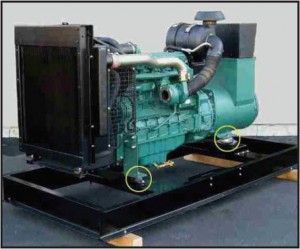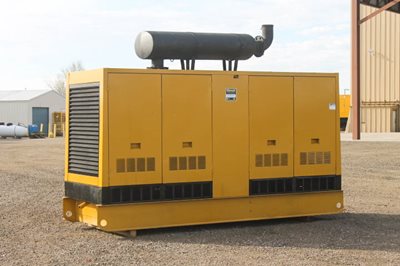Generators are always helpful for many purposes, including home use, but how can you reduce it’s constant buzzing sound? Luckily, there are many different solutions to this common problem, from quick hacks to longer-term fixes. Read on for a comprehensive guide to reducing generator noise so you can use your generator anytime without noise disturbing you.
Table of Contents
Points You Should Know
Making some quick adjustment can make your generator less noisy than before.
1. Set it up on a soft surface.

A soft surface will dampen the noise that the generator produces. If you’re out camping, this can be as simple as placing it on a patch of grass or dirt. However, if you need to set it up on a hard surface, lay an anti-vibration mat underneath to soften the vibrations and noises.
Hard surfaces amplify the noise and vibrations produced by a generator. Avoid positioning it on any kind of concrete, wood, or asphalt.
2. Get rubber feet for the generator.

Rubber feet work like a soft surface, stopping vibrations and noise. They’re an equally effective alternative to rubber mats and grassy ground, absorbing vibrations from the generator before they can echo out and make more noise. Pick up a set of rubber generator feet, and check to make sure they’re compatible with the generator you own before you buy.
3. Muffle it with water.

Water naturally dampens sound. Fill a 19 L bucket with water. Attach a hose pipe to the end of the generator’s exhaust and put the other end of the hose into the bucket of water. This simple hack will muffle the sounds from the generator’s exhaust pipe and silence the generator when it runs.
Position the generator slightly higher up than the bucket and make a small pinprick in the hose. This prevents water from getting into the generator and pressure from building up.
4. Use sound deflectors.

Sound deflectors redirect the sounds of the generator downward. You can use something as simple as plywood sheets to deflect sound! Prop a plywood sheet against each side of your generator at an angle, with the top of the plywood touching the generator and the bottom further away. You’ll need 4 sheets total. The diagonal slant of the plywood catches sound and deflects it, so you don’t hear it as much.Make sure you have enough plywood to totally surround the generator.
5. Get an acoustic enclosure box.

Place the generator inside the enclosure to dampen the noise. An acoustic enclosure (also called a baffle box) provides insulation for the generator, blocking noise from passing outside the box. Either buy or construct one using plywood sheets, mass-loaded vinyl (MSV), and acoustic foam panels.
For building the box:
Measure your generator. Use the measurements to determine the size of your box, leaving enough space inside to fit the generator, plus the vinyl and foam panels that will cover the box’s interior.
Cut 6 plywood sheets to the desired size. These will be the sides of your box. Make holes in the top sheet for the generator’s ventilation duct. Measure the duct first, so you know how big to cut the hole!
Cut 6 pieces of MSV for each side of the box and 6 pieces of acoustic foam paneling. Make sure each has a ventilation hole to match the box.
Attach the MSV to the interior sides of the box with a staple gun. Then, attach the foam panels to the MSV with a spray adhesive. Seal the sides with Green Glue, and construct the wood box.
6. Install a silencer.

A generator slip-on silencer suppresses noise from the generator. They stop the generator’s noise at the source—its duct fan, which creates loud vibrations as it works. Buy a silencer that’ll fit your generator; they’re made for both larger and portable generators. Follow the installation instructions that come with your silencer of choice and attach it to the generator’s exhaust outlet.
Silencers are more narrow and tube-like than typical mufflers. They don’t come with any mounting kit or extra supplies, as they’re designed to slip on easily and quiet the exhaust.
7. Invest in an electric generator.

Electric generators are cleaner and quieter than gas ones. They don’t burn gas or propane and can even be recharged with solar panels. Because energy is stored on an internal battery rather than actively produced, electric generators run much more quietly than their gas consuming counter part do. Consider investing in one when it’s time to replace your old generator.
Most noise reduction techniques can’t completely block out the sound from a gas generator, but electric generators don’t make any sound, making them highly convenient.
Thanks for giving your time to read our blog on this topic. We post regularly on hot topics like this. So please do follow us at https://histblog.com/ to keep refreshing your knowledge on latest topics like this occurring around the world.



